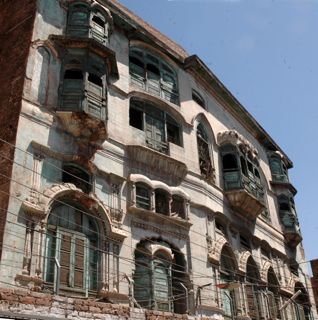The Scylla of violence
http://thenews.com.pk/daily_detail.asp?id=237757
The News
Thursday, May 06, 2010
Dr Mohammad Taqi
"This is a political war and it calls for discrimination in killing." -- John Paul Vann, US adviser in Vietnam
The recent killing of Professor Nazima Talib in Quetta has once again called into question the logic of indiscriminate violence against the non-combatant, non-Baloch settlers in the province. It has turned the focus of attention not only to the Baloch guerrilla fighters but has simultaneously put those, who support a non-violent Baloch struggle, on the spot.
Writing about the potential US policy towards Balochistan, Selig S. Harrison noted in his 1981 book 'In Afghanistan's Shadow' that, "with respect to the Baloch issue, the American goal should be to forestall the necessity for a choice between the Scylla of supporting repressive counterinsurgency programs and the Charybdis of supporting Baloch independence."
Indeed both the friends and foes of the Baloch have had to follow this impossible-to-negotiate path. The state players like the USA, former Soviet Union and India have erred - by design or default - in favour of the Pakistani state, while treading this regional policy tightrope.
For the individual and politically or apolitically organised supporters, sympathisers and fellow-travellers of the Baloch struggle, it has been a rather straightforward matter where they have consistently condemned the repressive tactics of the Pakistani state machinery while openly endorsing the Baloch cause. Be it the joining of the 'London Group' boys with the Parari (fighters) in Marri hills in the1970s or lending open - albeit tepid - political support from Wali Khan to Asif Zardari, the Baloch struggle has had almost unanimous backing from the leftist and the centre-left circles of Pakistan.
With the rising spate of killings of the non-combatants, especially Punjabis, in Balochistan, the non-Baloch sympathisers of the Baloch nationalists are finding themselves in an increasingly difficult situation in defending what they have held to be a legitimate resistance and indeed a just war.
The nature of the Baloch guerrilla struggle has been complex throughout its many phases. For the most part though, it has followed - as accurately noted by Selig Harrison - the line given by Che Guevara's associate Régis Debray: in the revolutionary struggle the fighters themselves should be the focus of political power and not subservient to the political leadership not involved in fighting.
Sardar Ataullah Mengal and to some extent Nawab Khair Bukhsh Marri had correctly observed during the 1970s that the students and non-students joining the ranks of the armed struggle would not be under their political guidance or control. These leaders, due to both personal and ideological discipline, did not encourage ideological waywardness in the Baloch guerrillas.
On the other hand, the late Nawab Akbar Khan Bugti, for various reasons, contributed to strengthening of this behaviour in the movement. Nawab Bugti was a rather late convert to the Baloch nationalist cause. Besides having a death wish characteristic of a convert, he injected traits in the struggle that have over the last several years contributed to its negative image.
Irregular and asymmetric wars - like any other armed conflict - exhibit tremendous variation in the magnitude and type of violence, even within different phases and time-periods of that particular conflict. The motives of such violence, especially against civilians are complex and multiple. They could range from drawing attention through a spectacular act like the WTC bombings to instilling fear and triggering displacement, as in the case of the Jewish Irgun's attack on Deir Yassin in Palestine.
Regardless of the targets and tactics of violence, it is neither indiscriminate as such nor without consequence. Usually, a method exists to such madness, whether it is a so-called reprisal based on a presumed guilt by association of the target or simply an attempt to plunder and eliminate a group.
More importantly, there are limits to any strategic gains through such violence. Beyond a certain point, violence - indiscriminate or not - is counterproductive. The general population, angered and frightened by the violence, is not only likely to support the state's repressive response but might also resort to tit-for-tat hostilities as have been witnessed in the case of the Baloch students in Punjab.
The Baloch nationalist movement now has reached a juncture where it may lose the support of its various sympathisers in the rest of the country. Similarly, the state apparatus is also at the threshold where it would likely respond by high-profile deterrent activity against the resistance.
The state forces already outnumber and out-gun the Baloch nationalists and have no intention to scale back their repressive activity. Given the geopolitical realities surrounding Balochistan, it is highly unlikely that the Baloch guerrillas will parade down the city streets, mobilise a mass following or engage the state forces in open combat.
With the US, Pakistan and India arriving at a tacit understanding on the future direction of events in Afghanistan, the Baloch question is nowhere near the top of any regional or global power's to-do list.
It is high time that the Baloch fighters and non-combatant elders and leaders revisited the tactics, direction and objectives of their campaign. The traditional Baloch leadership should be brought back into the picture. The Baloch resistance is at a point where, without political leadership, the Scylla of its own violence is about to push it into the arms of the Charybdis of failure.

No comments:
Post a Comment